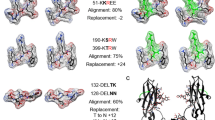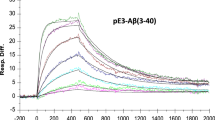Abstract
THE P component is a normal 9.5 S serum α1 glycoprotein composed of subunits that is found as a minor constituent of all types of amyloid deposits1,2. Painter et al.3 have described a 9.5 S α1 glycoprotein, C1t, composed of ten 23,000 molecular weight (MW) subunits, which may have an important role in the regulation of complement C1 function. Ultrastructural and immunological studies showed a striking resemblance between P and C1t (refs 3, 4). CRP is an acute phase reactant, present in many species which can interact with pneumococcal C-polysaccharide, choline phosphatides and various polycations to activate the complement cascade5,6. It is composed of a 23,000 MW subunit non-covalently linked as a pentamer7. A clear-cut structural relationship between C1t and CRP has been demonstrated by comparing amino terminal sequences7. Since all three molecules—P, C1t and CRP—have a similar ultrastructure, namely, a cyclic pentamer or a decameric double, the term ‘pentraxins’ has been proposed by Osmand et al. for this group of molecules7. We report here the characterisation and the amino terminal sequence of human P component. The P component is identical to C1t except for the absence of the first residue (His), thus providing additional evidence for a close evolutionary relationship for P, C1t and CRP.
This is a preview of subscription content, access via your institution
Access options
Subscribe to this journal
Receive 51 print issues and online access
$199.00 per year
only $3.90 per issue
Buy this article
- Purchase on Springer Link
- Instant access to full article PDF
Prices may be subject to local taxes which are calculated during checkout
Similar content being viewed by others
References
Binette, P., Binette, M. & Calkins, E. Biochem. J. 143, 253–254 (1974).
Skinner, M., Cohen, A. S., Shirahama, T. & Cathcart, E. S. J. lab. clin. Med. 84, 604–614 (1974).
Pinteric, L., Assimeh, S. N., Kells, D. I. C. & Painter, R. H. J. Immun. 117, 79–83 (1976).
Skinner, M., Benson, M. D. & Cohen, A. S. Arthritis Rheum. 19, 822 (1976).
Kaplan, M. H. & Volanakis, J. E. J. Immun. 112, 2135–2147 (1974).
Siegel, J., Rent, R. & Gewurz, H. J. exp. Med. 140, 631–645 (1974).
Osmand, A. P. et al. Proc. natn. Acad. Sci. U.S.A. 74, 739–743 (1977).
Pisano, J. J. & Bronzert, T. J. J. biol. Chem. 244, 5597–5607 (1969).
Summer, M. R., Smythers, G. W. & Oroszlan, S. Analyt. Biochem. 53, 624–628 (1973).
Smithies, O. et al. Biochemistry 10, 4912–4921 (1971).
Author information
Authors and Affiliations
Rights and permissions
About this article
Cite this article
LEVO, Y., FRANGIONE, B. & FRANKLIN, E. Amino acid sequence similarities between amyloid P component C1t and CRP. Nature 268, 56–57 (1977). https://doi.org/10.1038/268056a0
Received:
Accepted:
Published:
Issue Date:
DOI: https://doi.org/10.1038/268056a0
This article is cited by
-
Chromosomal location of the gene encoding the murine acute-phase protein serum amyloid P-component (SAP)
Biochemical Genetics (1989)
-
Chromosomal location of the gene encoding the murine acute-phase protein serum amyloid P-component (SAP)
Biochemical Genetics (1989)
-
Compressive and torsional behaviour of Kevlar 49 fibre
Journal of Materials Science (1984)
-
Familial Mediterranean fever and amyloidosis
Kidney International (1981)
Comments
By submitting a comment you agree to abide by our Terms and Community Guidelines. If you find something abusive or that does not comply with our terms or guidelines please flag it as inappropriate.



